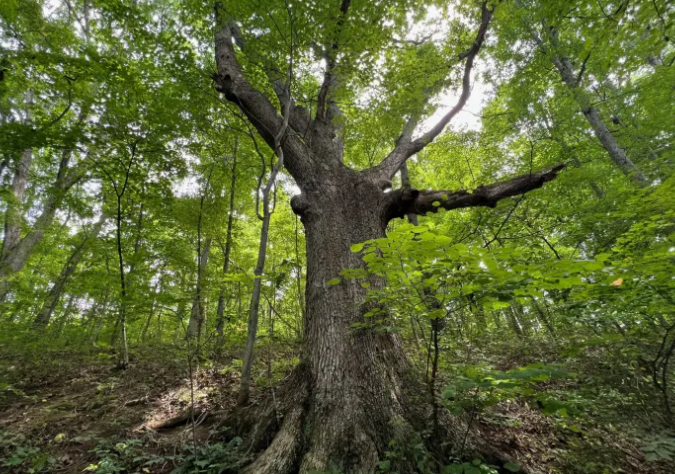When it comes to national symbols, countries often choose a plant or animal that reflects their unique history, culture, and geography. In Azerbaijan, the Azerbaijan National Tree is the oak - a powerful and resilient tree that has played an important role in the country's mythology, literature, and economy for centuries. In this article, we will explore the fascinating world of Azerbaijan's national tree, including its cultural significance, ecological importance, and economic value.
Historical Significance of the Azerbaijan National Tree
The oak tree has been an important part of Azerbaijan's landscape for thousands of years. The ancient Greeks believed that the region was home to a magical forest of oak trees, which was said to be the home of the god Apollo. In medieval times, Azerbaijani poets and writers often referenced the oak tree in their works, using it as a symbol of strength, wisdom, and endurance.
During the Soviet era, the oak tree was heavily exploited for its timber, which was used to fuel the country's industrial growth. This led to widespread deforestation and a decline in the number of oak trees in Azerbaijan. However, in recent years, there has been a renewed interest in preserving the country's natural heritage, including the oak tree.
Cultural Significance of the Azerbaijan National Tree
The oak tree is deeply embedded in Azerbaijan's cultural identity. It is often featured in art, literature, and music, and is considered a symbol of strength, courage, and resilience. In traditional Azerbaijani culture, the oak tree was believed to possess mystical powers, and was often associated with ancient pagan rituals and beliefs.
In addition to its cultural significance, the oak tree is also an important part of Azerbaijan's religious traditions. In the Islamic faith, the oak tree is mentioned in the Quran as a symbol of stability and steadfastness, and is often associated with the Prophet Ibrahim.
Ecological Importance of the Oak Tree in Azerbaijan
The oak tree plays a crucial role in maintaining Azerbaijan's ecosystem. It is a source of food and shelter for a wide variety of wildlife, including birds, mammals, and insects. Oak forests are also important carbon sinks, absorbing large amounts of carbon dioxide from the atmosphere and helping to mitigate the effects of climate change.
In addition, the oak tree is known for its ability to improve soil quality and prevent erosion. The deep roots of the oak tree help to anchor soil in place, reducing the risk of landslides and other forms of soil degradation.
Economic Value of the Oak Tree in Azerbaijan
The oak tree has been an important source of income for Azerbaijan for centuries. Historically, oak timber was used for shipbuilding, furniture making, and other industries. Today, the oak tree is still an important part of the country's economy, with oak wood being used for construction, flooring, and furniture.
In addition, the oak tree is a source of medicinal products, such as oak bark extract, which is used in the treatment of a variety of ailments, including inflammation, diarrhea, and skin disorders.
Conservation Efforts to Protect the Azerbaijan National Tree
In recent years, there has been a growing awareness of the importance of preserving Azerbaijan's natural heritage, including the oak tree. The government has launched several initiatives aimed at protecting and promoting the oak tree, including reforestation projects, awareness campaigns, and the establishment of protected areas.
In addition, local communities and NGOs have also played an important role in promoting the conservation of the oak tree in Azerbaijan. For example, the Azerbaijan National Academy of Sciences has established a research center dedicated to the study and conservation of the oak tree, while NGOs such as the Caucasus Environmental NGO Network have launched awareness campaigns aimed at promoting sustainable forest management practices.
FAQs
- Why is the oak tree important to Azerbaijan?
The oak tree is an important symbol of strength, resilience, and endurance in Azerbaijani culture, and has played a crucial role in the country's history, mythology, and economy.
- What are some traditional uses of the oak tree in Azerbaijan?
Historically, oak timber was used for shipbuilding, furniture making, and other industries. Today, oak wood is still used for construction, flooring, and furniture.
- How does the oak tree benefit Azerbaijan's ecosystem?
The oak tree is a source of food and shelter for a wide variety of wildlife, and also plays an important role in preventing soil erosion and mitigating the effects of climate change.
- What is being done to protect the oak tree in Azerbaijan?
The government has launched several initiatives aimed at protecting and promoting the oak tree, including reforestation projects, awareness campaigns, and the establishment of protected areas. NGOs and local communities have also played an important role in promoting sustainable forest management practices.
- Is the oak tree unique to Azerbaijan?
No, the oak tree is found in many parts of the world, including Europe, Asia, and North America. However, it holds a special significance in Azerbaijani culture as the country's national tree.
Conclusion
In conclusion, the oak tree is an important part of Azerbaijan's cultural, ecological, and economic heritage. As the country's national tree, it represents the strength, resilience, and endurance of the Azerbaijani people. While the oak tree has faced many challenges over the years, there is growing recognition of its importance and efforts are being made to protect and promote this magnificent tree for future generations to enjoy.
References
- Azerbaijan National Academy of Sciences. (n.d.). Oak Research Center. Retrieved from http://www.oak.az/en
- Caucasus Environmental NGO Network. (n.d.). Forests. Retrieved from https://www.cenn.org/forests
- Encyclopaedia Britannica. (n.d.). Azerbaijan. Retrieved from https://www.britannica.com/place/Azerbaijan
